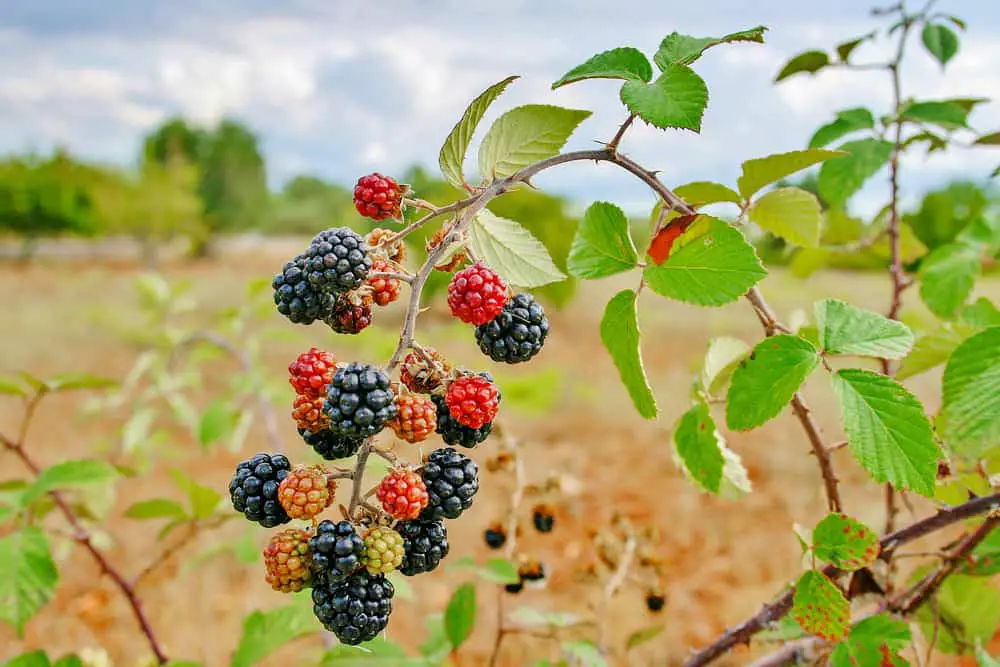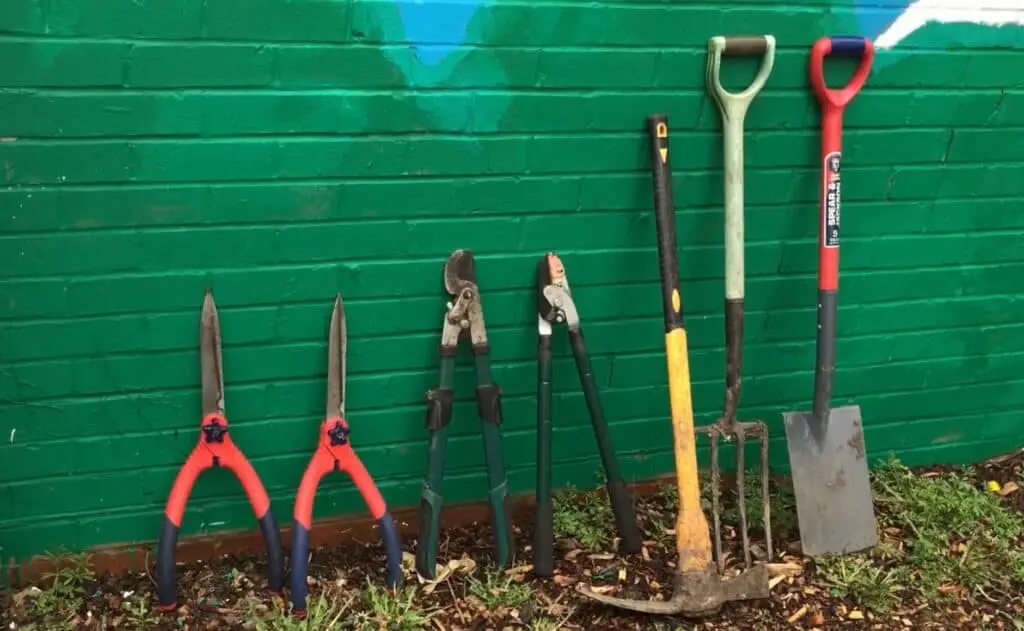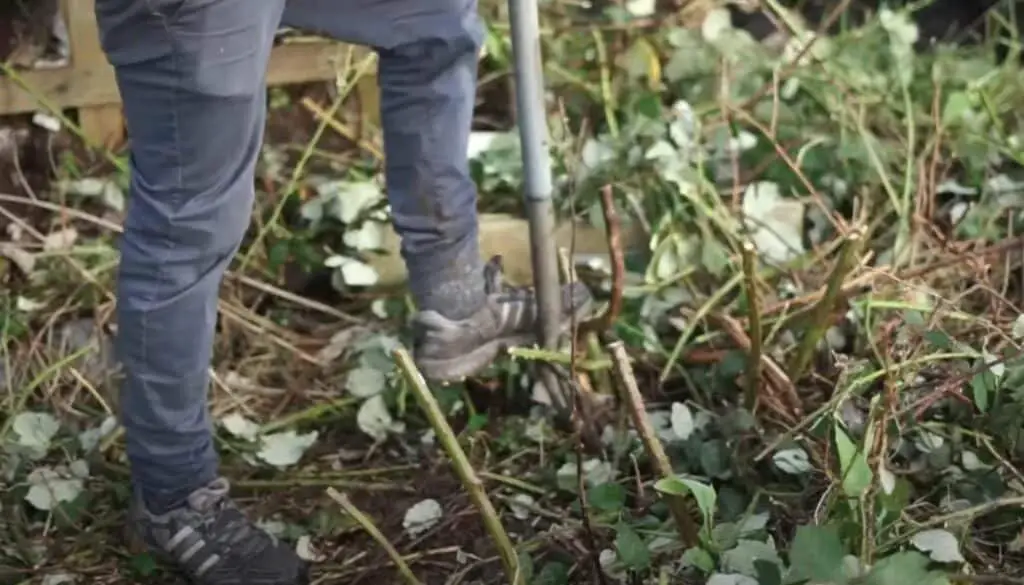How To Kill Brambles For Good
With and Without Weed Killer
The right methods can help lighten the work of dealing with thickets of woody weeds, such as brambles, once they become established. We’ll explore the different methods available to help you eradicate brambles from your garden and make sure they don’t return! In this guide we look at a natural way to remove brambles and also the best weed killer to remove brambles.
What are brambles?
The term Brambles refers to a wonderful grouping of berries from which raspberries, blackberries, and black raspberries fall. Even if we consider the first category of berries that fall into this category, there are so many species within this category that it staggers the imagination. There are over 200 species included in this category.

In the United Kingdom, “blackberries” (Rubus fruticosus) are often interchanged with “brambles”; in fact, the term “bramble jelly” is what Americans might call “blackberry jam.”
It’s also important to know that the term bramble also refers to a shrub that is either prickly or thorny.
What is the problem with brambles?
Brambles can be a problem, especially in neglected areas of the garden, or under hedges as they can spread and grow so fast, if a bramble cane manages to touch the floor, it will grow a new plant. Let’s not forget all the berries they produce, each berry (fruit) is full of seeds they just want to sprout and create new bramble shrubs.

However wildlife can benefit from brambles and other woody weeds. For example, bees feed on the flowers, caterpillars feed on the leaves, and birds feed on the fruits. Let’s not forget that they also provide shelter for wildlife as well.
Where do brambles grow?
Throughout the UK, brambles can be found in almost any place, including woodlands, hedgerows, gardens, and roadside verges. They have a low tolerance for pH and they grow well in acidic soils.
How Do Brambles Spread?
Several methods exist for spreading the bramble plant. In the first place, bramble plants are capable of regenerating from their root and stem fragments, so even the tiniest fragment of root left behind could grow into a whole new plant if you pulled them out. Birds can also spread brambles through their digestive systems.
First of all, let’s look at the tools needed to effectively remove and control brambles
It is much easier to kill and remove brambles when you have the right tools. The tools you need will also depends on how you decide to tackle brambles. You can either do it organically or with weed killer.
For cutting the tough canes, you will need some pruning tools. A decent pair of secateurs or loppers would be a good addition to your arsenal.Alternatively if you have a brush cutter you can use that.

Keeping your hands and forearms protected from those pesky thornes requires leather gauntlets or gloves.
If your choosing the organic method of removing brambles , plan to use a mattock, spade or garden fork to dig up the roots. If your soil is heavy clay, a mattock should pay for itself.
If your going down the weed killer option then your going to be needing a suitable weed killer and a knapsack or bottle sprayer for it.
How To Get Rid Of Brambles:
There are 2 ways to kill brambles or get rid of them
A)The Organic Method / Cultural Control
The scrambling stems and canes of the bramble bush should be cut back to where your just left with bramble stems around 15cm (half a ft) from the ground. A brush cutter will get rid of large areas of brambles to the mentioned height with ease.

Once that’s done you have to dig out the bramble, including the roots. Brambles can regenerate from the roots, so bramble roots must be removed to stop any new growth.

B) Chemical Control – Best Weed Killer For Brambles
The best weed killer for brambles is either SBK Brushwood Killer or a highly concentrated Glyphosate based weed killer.
SBK contains Triclopry which is man made and breaks down in soil after about 6 weeks it has been specifically created to target broadleaf leaf and woody plants. Within a few weeks, this chemical kills the entire bramble plant as it is absorbed by the leaves or cut stems and roots of the plant.
Note that it doesn’t really kill grass but could damage your lawn or turf.
A Glyphosate based weed killer will on the other hand try and eliminate any plant that it touches.
As with the natural method above the scrambling stems and canes should be cut back to around 15cm (half a ft) and then simply make up your chosen weed killer following the manufacturer’s instructions in a suitable sprayer and spray the cut stems and around the plant.
Best time of year to control bramble with weed killer?
In order to control brambles, it is best to apply weed killers during the plant’s growing season, which is spring through autumn.
As the plants are actively growing in the spring (March, April, May), the weed killer circulates around them easily, so it is ideal to apply it in the spring. There is also the fact that the leaves of the bramble plant are fresh and soft, which makes it easier for the weed killer to penetrate into the plant and be absorbed.
What to do with bramble waste?
Well the good news is that there are multiple ways in which you can deal with bramble waste.
- It can be added to your garden waste bin if you have one from the council.
- You can take them to your local council’s recycling center.
- Once the waste has dried out you can burn them in a garden incinerator. If you try and burn it before they dry out, you will cause a lot of thick grey smoke from your fire. Potentially annoying all your neighbours.
- Make sure that your bramble waste is free soil then you can shred it finely in a garden shredder creating some much loved mulch.
Can you get rid of brambles permanently?
In this case, the answer is simply “NO”, because brambles can grow from seeds in berries that are eaten by birds, and birds can poop anywhere. This means that even if you fully clear your garden or allotment of brambles today you may find some growing within a couple of years again. It’s easier to deal with them when they are just young plants.
